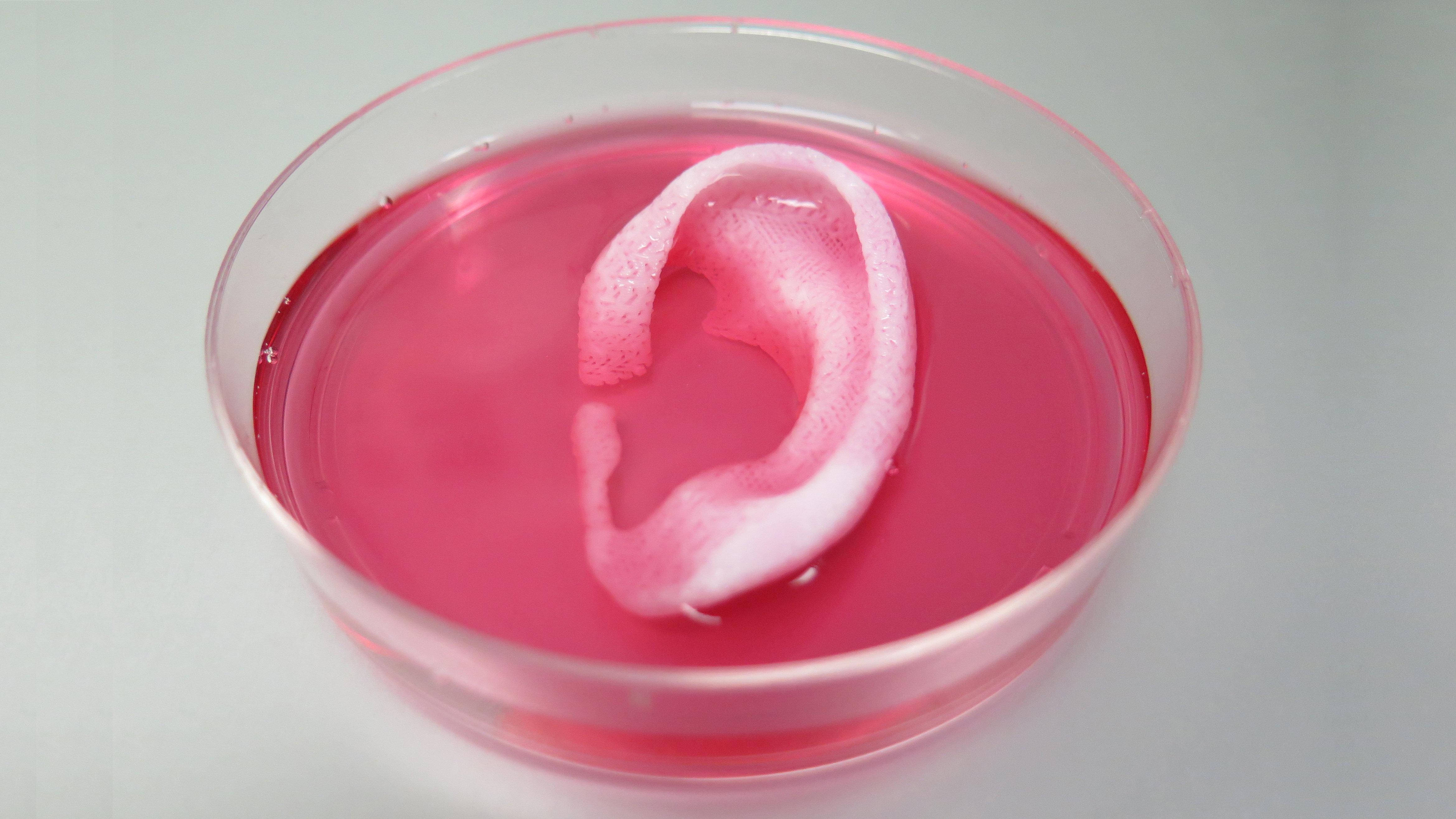
A new system to print 3D models using human tissue has been developed by researchers at the Wake Forest Institute of Regenerative Medicine, USA.
The idea behind the research was to create stable tissue to replace areas of damage in the human body, and while this isn't the first time a 3D printer for organs has been developed, it is still an impressive achievement.
A mix of hydrogel and biodegradable polymers form the structure of the tissue as the nozzles position them in specific layers, and 3D imaging of the missing or damaged part dictates the precise shape on the platform.
Bioprinting 3D tissue or organs poses the tricky question of how to keep cells alive throughout the print cycle. The challenge was overcome in this instance by allowing the cell-laden hydrogel to absorb nutrients via transporting pathways built into it.
You can see the printer in action below:
This isn't the first time we've written about the Wake Forest School of Medicine's 3D printing projects either.
If this technology continues to provide stable solutions to tissue manufacturing, it will allow our health services to roll it out, and could even turn up in our homes one day, letting us literally patch ourselves up.
Sign up for breaking news, reviews, opinion, top tech deals, and more.
"We believe regenerative medicine promises to be one of the most pervasive influences on public health in the modern era." says Anthony Atala, MD, Director of the Institute.
Images and video credit: Wake Forest Institute for Regenerative Medicine.
Via Gadgets